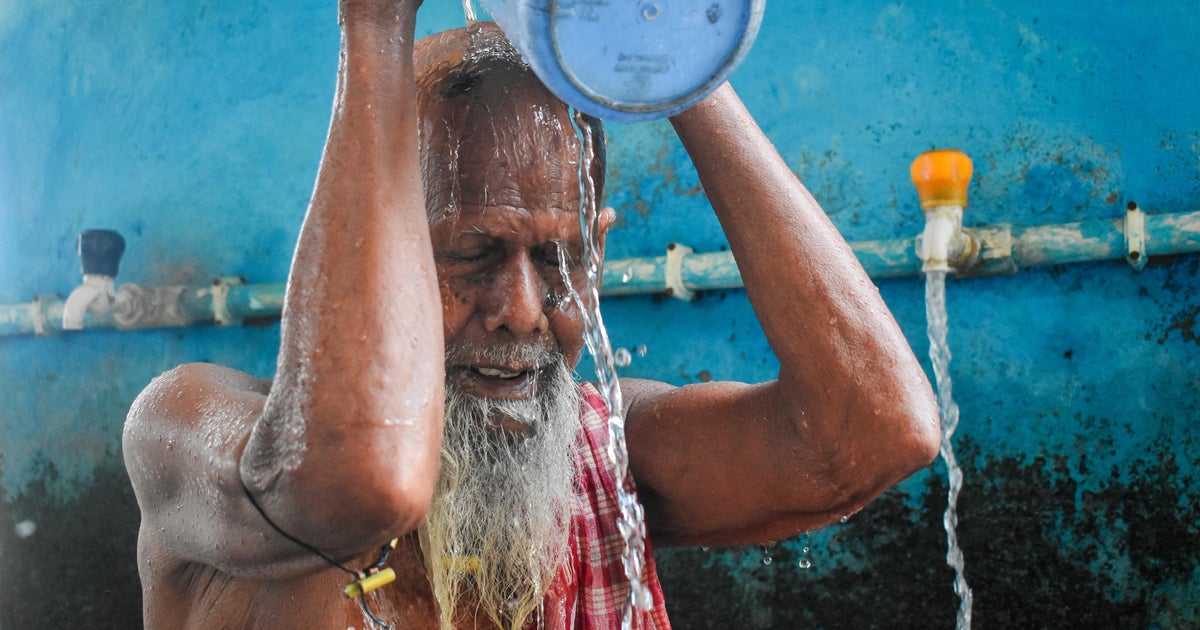Bumblebee babies are dying in their nests because global temperatures are getting too warm, study finds
Scientists have been warning for years that bumblebee populations are declining, posing a risk to the vital role that pollinators have in helping maintain food and plants across the world. New research has found a "major factor" in why.
The answer? It's getting way too hot.
Like humans, bumblebees' bodies thrive best within certain temperature thresholds. Based on 180 years worth of literature, University of Guelph environmental science professor Peter Kevan and his team found that bumblebees are most likely to survive up to 36 degrees Celsius, or 96.8 degrees Fahrenheit. Their optimal temperature range for development is between 30 and 32 Celsius, or between 86 and 89.6 degrees Fahrenheit, depending on the species.
Bumblebees do have the ability to thermoregulate, meaning they can somewhat control the heat throughout their bodies. But Kevan said that natural skill does not seem to be enough when it comes to their nests and the larvae that rely on them to grow.
The optimal temperature range for bumblebee nests is between 82.4 and 89.6 degrees Fahrenheit. And when the heat rises just slightly higher to 95 degrees Fahrenheit, Kevan said it becomes "lethal, despite the remarkable capacity of bumblebees to thermoregulate."
"We can surmise that nest temperatures above the mid-30s Celsius would likely be highly detrimental and that above about 35 Celsius death would occur, probably quite quickly," Kevan said.
Average global temperatures have been significantly rising in recent decades. Last year was the hottest ever recorded and 2024 has only seen back-to-back heat extremes, with many cities across the world seeing record-high temperatures in winter. The situation is only expected to worsen as the continued burning of fossil fuels emits gases that trap heat from the sun, amplifying temperatures.
"Excessively high temperatures are more harmful to most animals and plants than cool temperatures," Kevan said. "When conditions are cool, organisms that do not metabolically regulate their body temperatures simply slow down, but when temperatures get too high metabolic processes start to break down and cease. Death ensues quickly."
It's not the only reason bumblebee populations are declining – habitat loss, pesticides, diseases and wildflower loss are also factors. There are more than 250 bumblebee species worldwide, and in the U.S. alone, there are 49 species of bumblebees. In recent years, two species have gone extinct, according to the U.S. Forest Service.
But Kevan's team found that the heat seems to be difficult for bumblebee species to adapt to, leading to their development of dangerous heat stress.
And with bumblebees, a detriment to one can easily become a detriment to all. The research, published in Frontiers in Bee Science on Friday, explains that bumblebee colonies are "superorganisms" in which overall survival is collective and depends on the colony's ability to produce offspring as a whole. Essentially, even if some bumblebees can take the heat, the ones that can't pose a threat to the colony's future. And if it's so hot that the baby bees are dying before they exit their larval stage, "the whole colony suffers," the press release says.
"Excessive heat is clearly a major issue for perhaps most species of bumblebees," the study says, "and it is the factor considered in most detail for the effects of climatic warming."




